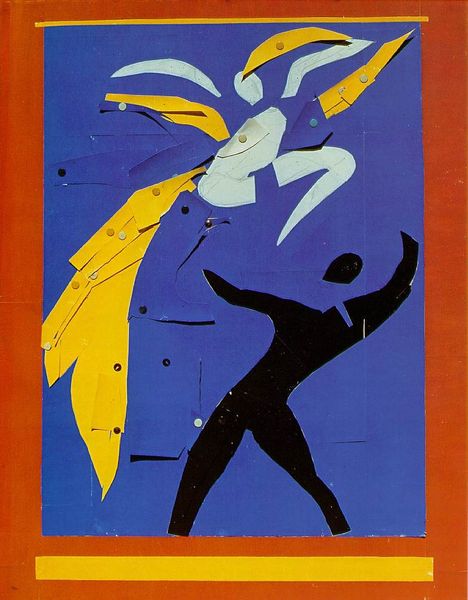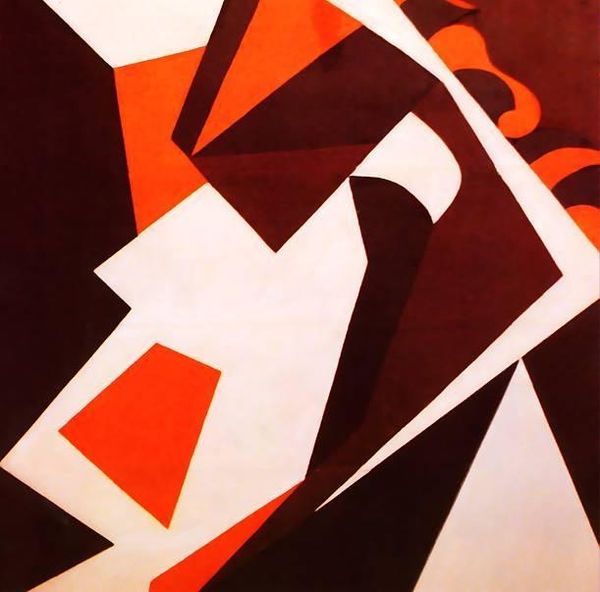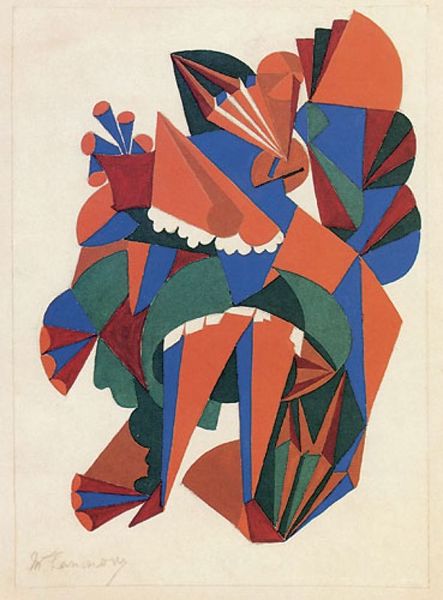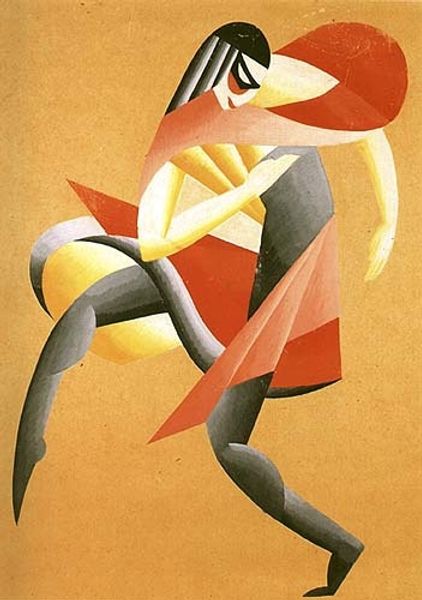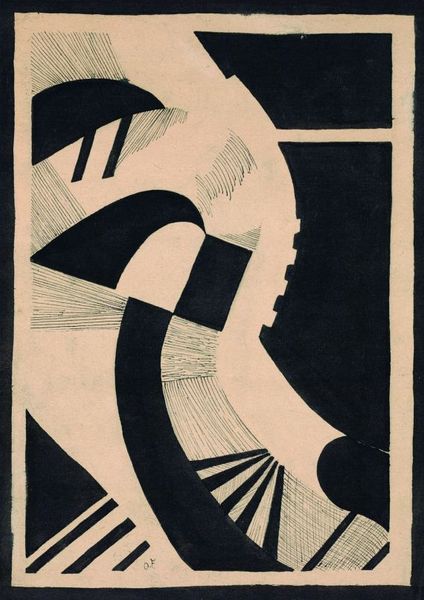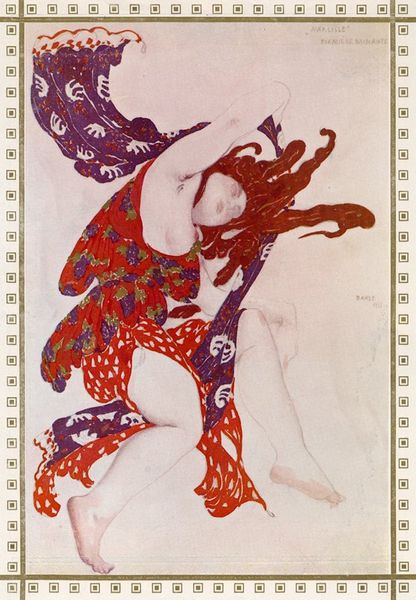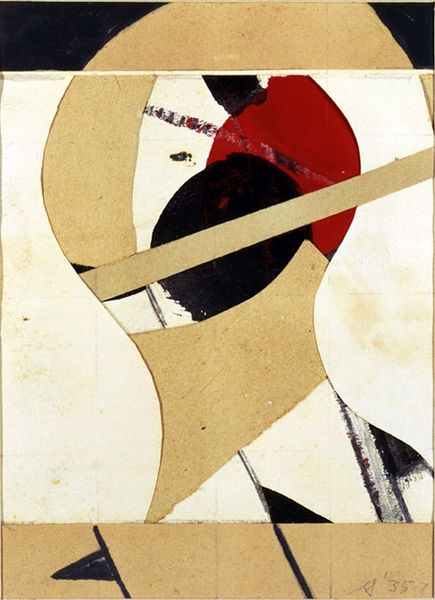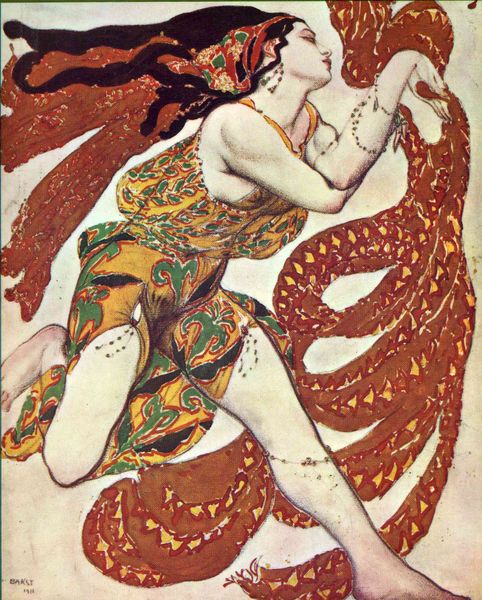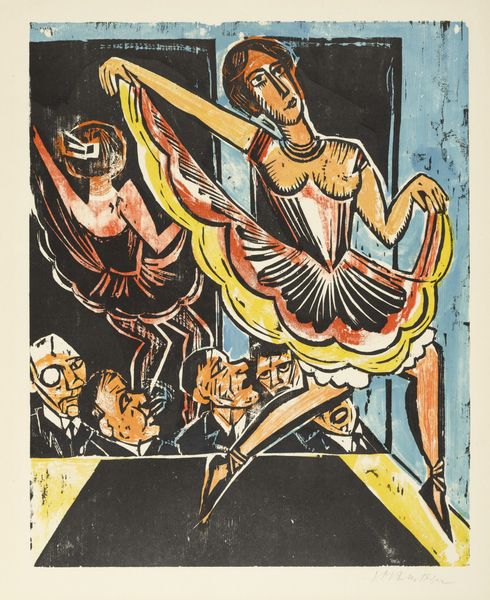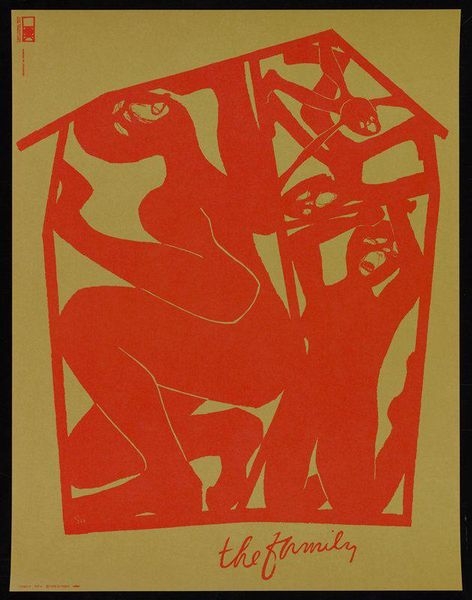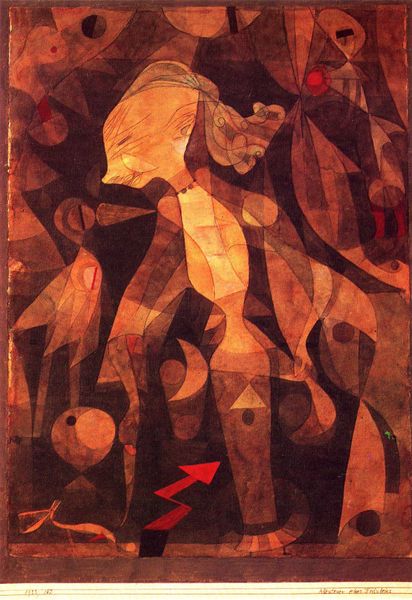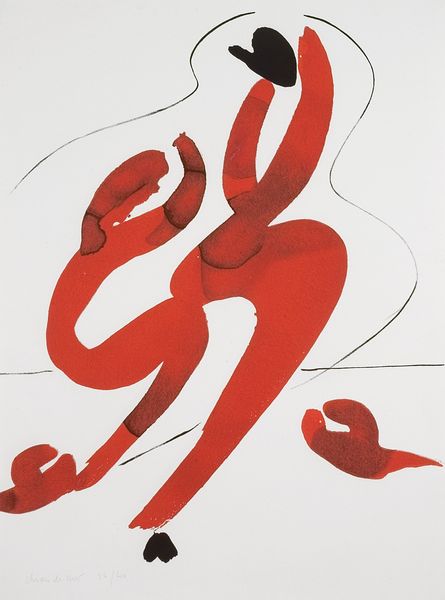
Copyright: Public domain
Curator: This is Aleksandra Ekster’s Costume for Romeo and Juliet, designed around 1920. Ekster was deeply involved with the avant-garde theatre, and this design offers a vibrant intersection of Cubism and Constructivism in theatrical design. Editor: It feels… dangerous, doesn't it? The shapes are so sharp, the red so bold. It's like love and tragedy distilled into jagged geometry. Curator: Indeed. The abstract form allows for a focus on pure color and shape, elements vital to Ekster's formal vocabulary. Note how the vertical thrust of the red contrasts against the stark whiteness and geometrical black accent above. Editor: The costume almost looks like it's exploding. I suppose that captures Romeo's impulsive nature and his intense passion... or, perhaps, the tragic end. Curator: We might examine the Constructivist aspects here—the use of simplified geometric forms, devoid of excessive ornamentation, pointing to an industrialized, modern sensibility. Consider how this choice would challenge conventions on the stage. Editor: There's also something incredibly human about its incompleteness. The face is just an outline, the body suggested more than defined. It speaks to the universality of the tale and its capacity for infinite reimaginings, even in the body wearing it. Curator: A valid point. Moreover, consider Ekster’s process. She uses not just acrylic, but also collage and textile elements. A blend of materials that challenges our understanding of "painting." Editor: It looks more like an experience, to be touched and worn rather than viewed passively. And think about the movements that this garment would be doing during a performance! Curator: A vital consideration. By integrating principles of Cubism and Constructivism into theatrical costume, Ekster compels us to perceive movement and drama through pure abstraction. Editor: I suppose this shows just how avant-garde was at this period. The image captures this perfectly. This garment speaks volumes about the collision between visual art and the performing arts. Curator: Precisely, and it speaks eloquently about Ekster's commitment to interdisciplinary creation, too. Editor: So we have to re-imagine not just Romeo, but the costume, too, not merely as covering, but as embodied feeling. What a beautiful moment.
Comments
No comments
Be the first to comment and join the conversation on the ultimate creative platform.
